Competitor analysis is not about copying your competitors (Don’t do that!) It’s the opposite, actually. You need be mapping competitors to find ways to set yourself apart from them and uniquely position your brand in the competitive landscape. Here’s a little bit about how to do that.
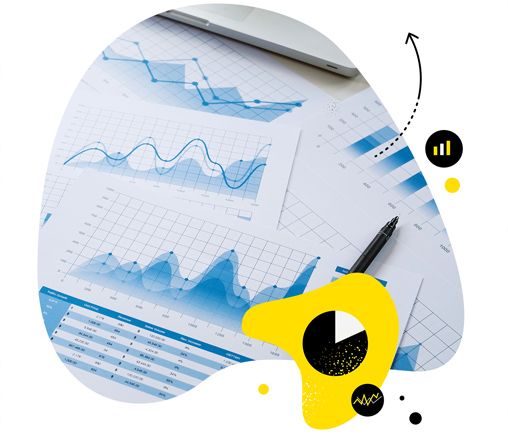
Analyze Competitors on Social Media
Find out what content works best for your competitors and when exactly it generates the highest engagement. Get competitive analytics for Facebook, Instagram, and YouTube – with an all-in-one social media tool.
What is competitor mapping?
Notice how I used the words “map” and “landscape”? It’s because competitor mapping is like finding your spot on a map – of all the different companies that operate in the same category and sell to the same or similar target audience. A.k.a., your competitive landscape.
And mapping your competitors is kind of drawing that map and defining the environment your brand functions in. So that you can do competitive benchmarking and create a more detailed marketing strategy to set your business apart.
Comprehensive competitor mapping includes identifying and analyzing your key competitors in your industry/niche and mapping out their:
- strengths and weaknesses
- market positioning
- products or services
- pricing strategies
- target customers
- distribution channels
- marketing tactics
- and other relevant factors.
For example, mapping your competitors on social media might include:
- figuring out the channels that they’re most active on
- finding out the types of content they post, the topics and campaigns, and the results they get
- analyzing their target audience and engagement.
Benefits of competitor mapping
Your brand doesn’t function in a vacuum. The more you know about your competitors and what they offer, the better you can define your unique value proposition that fills the gaps in what your competitors do. This is especially important for brands in competitive markets that need to consider their specific value proposition.
So here are a few reasons why you should do competitor research and mapping:
- Inform your marketing strategy. All the data you get from competitor mapping helps you create a much more detailed strategy across marketing channels, including how to talk about your products or services, who to talk to, and where.
- Benchmark performance. Competitor mapping helps nail down realistic KPIs to use for the execution of your marketing strategy. And that’s always helpful to have actual numbers to reach for and plan against.
- Spot opportunities (and threats.) Competitor mapping can help you spot growth opportunities – like underserved market segments, for example, or new products to launch. It can also direct your attention to areas that need improvement or more research and planning. And this can open your eyes to things that otherwise would be hard to see.
- Stay agile with your marketing. Analyzing competitors regularly will help you respond to what the market needs more flexibly and adjust your marketing strategy for better results. Because competitor mapping is not a one-and-done thing (nothing in marketing is, really.) Your competitive landscape will keep changing, as will your competitors and your brand, so it’s essential to make it a regular part of your marketing activities.
- Determine if a product/service/startup idea is viable. Competitor mapping, along with a detailed audience analysis, is an important element of determining product positioning and product-market fit. This way, you can be better prepared when you launch your product or service on the market and have greater chances of success.

Social media competitor analysis tool
Track your competitors on social media. Compare multiple accounts side by side and generate in-depth reports within seconds – with an all-in-one social media tool.
How to do competitor mapping
Creating a competitor map can be quite a bit of work, but there are tools that can help make the process more efficient. Here are a few steps to follow.
Identify your competitors
Start with defining your key competitors – the ones who serve the same target audience and are selling similar products. Clearly define those you want to target in your marketing tactics – usually the ones you want to win customers over from (or you want to prevent taking customers from you.)
Also, define your indirect competitors. You know how one of the main competitors of Netflix today is TikTok? They don’t have the same product, and yet they’re competing for the same audience’s attention. So pay attention to other products or services that are not directly comparable to yours but can steal customers from you because they answer a similar need or problem (though maybe in a slightly different way.)
Oh, and how do you do that? By conducting online research, going through search engine results, comparison sites, and also things like customer research to learn more about what products/services they already use and why.
Identify areas to focus on
A competitive analysis may be as comprehensive or as narrow as you want it to be. If your goal, for example, is to map out what your competitors do on social media, focus on all the necessary elements in that area, for example:
- social media platforms
- following volumes
- content formats
- engagement numbers
- types of campaigns
- etc.
And if you’re launching a new product or service and mapping competitors for the upcoming launch, you could do a more detailed product analysis, including analyzing your competitor’s products, pricing strategies, sales cycles, or even customer service approach and channels.
List your brand’s strengths and weaknesses
Otherwise known as a SWOT analysis (strengths, weaknesses, opportunities, and threats), this will help you identify your competitive advantage as well as areas for improvement. And it can serve as a base for comparison with other brands to find gaps to fill and actions to take.
Here’s an example of how to do a detailed SWOT analysis. It should include:
- Strengths, i.e., what you and your competitors do well, where you beat the competition, and what your audience values in what you offer
- Weaknesses, i.e., where your product or service lacks, what could be improved, and where your competitors shine more than you
- Opportunities, i.e., your goals, the products/services your competitors offer that you don’t yet (but potentially could), new markets to win over, etc.
- Threats, i.e., concerning changes in the market (like economic recession, for example), trends that could disrupt your business, and areas where your competitors can outperform you
Create your map
There are many ways to visualize a competitor map – and no, it doesn’t have to be an actual map. The key is for it to represent the market share of the selected competitors and how they stack up against each other and your brand.
It could be:
- a graph
- a pie chart
- a table
- a matrix.
For example, this is what an actual competitor map matrix looks like for enterprise-grade video conferencing software, created by G2.com:
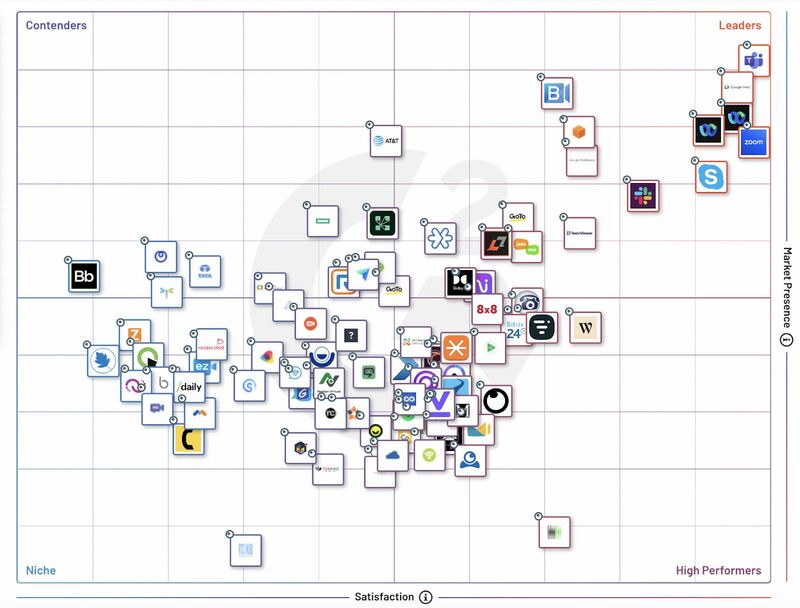
(And no, yours doesn’t have to include so many competitors. This is just for reference.)
Notice how this matrix categorizes brands based on their performance and market positioning.
You can also map out your brand and your competitors on a grid against certain qualities, like in the example below:
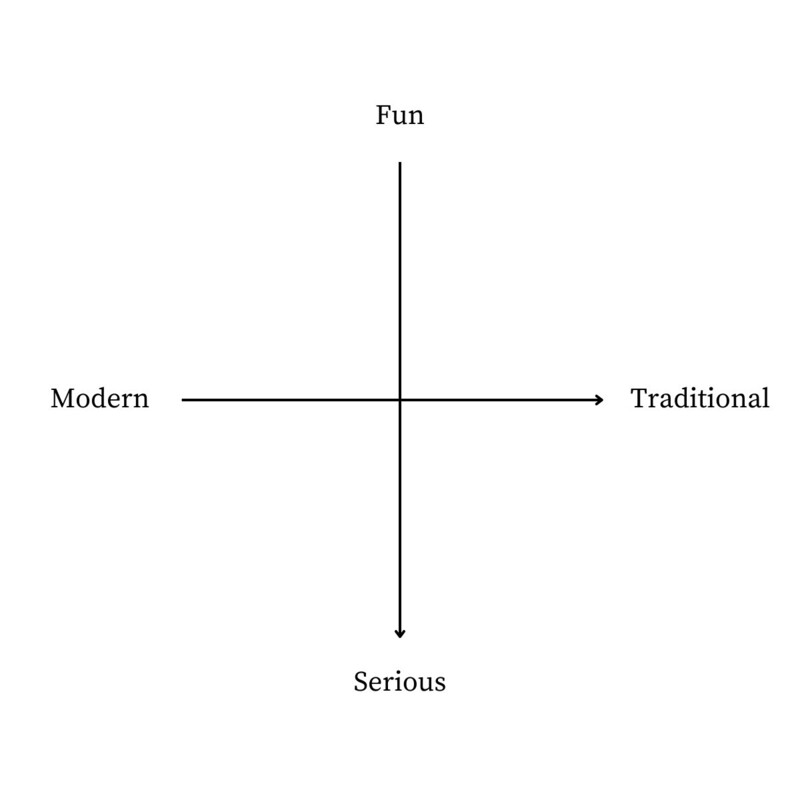
You can do the same with any combination of brand and product qualities to position your brand or product in a particular place and then use it for your marketing messaging, pricing strategies, etc.
How to do competitor mapping on social media
If you want to analyze your competition specifically on social media, here’s how to do it using NapoleonCat and its competitor analysis tools.
Follow your competitors’ social media profiles
In NapoleonCat, you can add the social media profiles of your selected competitors to track what they’re doing on social. Add any public business profile on Facebook, Instagram, and YouTube.

You can then see their social media analytics for the profiles you’re following and compare them with each other and with your social media performance.
Track the statistics that make sense for your business
You can create data sets to compare the different performance metrics that you want to benchmark, like follower growth or engagement rate. Compare them for different social media profiles to get an idea of how your competitors’ content and profiles are performing and what you should aim at.
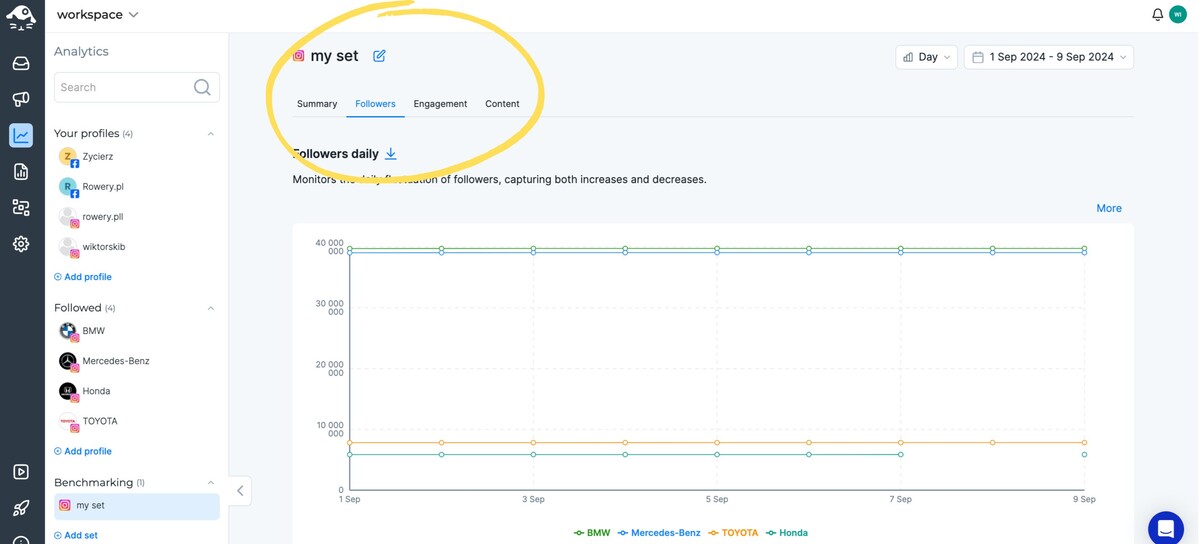
Create regular competitive reports
With the reporting feature in NapoleonCat you can set up and schedule competitive reports with all the data you want to track and compare for social media.
For example, you can compare multiple social media pages side by side:
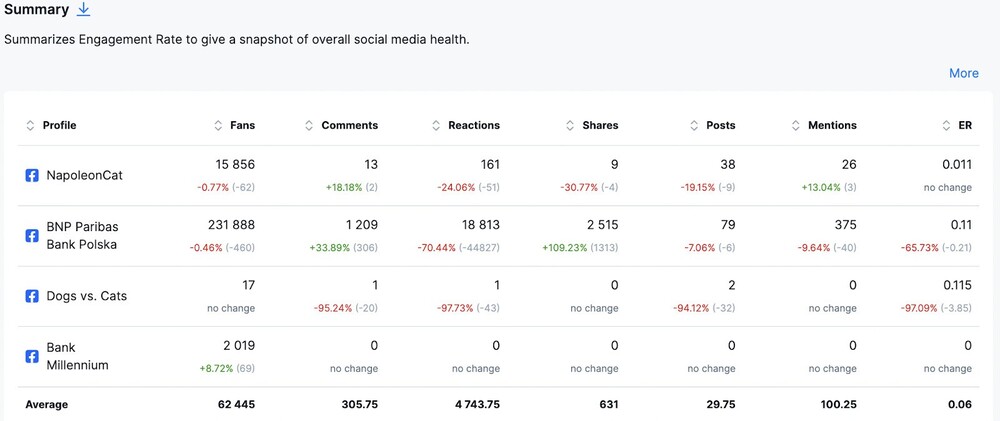
Or analyze and compare multiple profiles of your competitors:
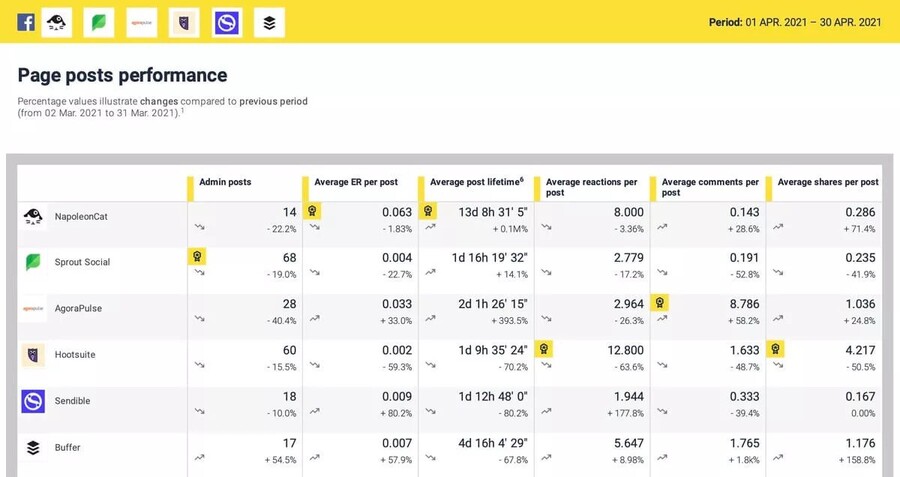
The report lays out all the data neatly, so you don’t have to worry about the presentation (especially if you want to send it to your boss or client.)
By scheduling them to be sent in regular intervals (e.g. monthly), you don’t have to lift a finger to create an up-to-date social media competitor analysis. It’s going to be automatically generated based on your initial setup (including what statistics you want to be included inside) and sent out to all the right people.
We highly recommend you test NapoleonCat completely for free – no credit card required 😉

Analyze Competitors on Social Media
Find out what content works best for your competitors and when exactly it generates the highest engagement. Get competitive analytics for Facebook, Instagram, and YouTube – with an all-in-one social media tool.
Keep your finger on the pulse with your competition
Mapping your competition is one of the essential elements when you want to develop marketing strategies that work and actually help sell your product or service. Plus, you can take away tons of learnings for your business from competitive analysis, so don’t miss that step – even if you think no competition can outpace you. 😉
You may also like:


